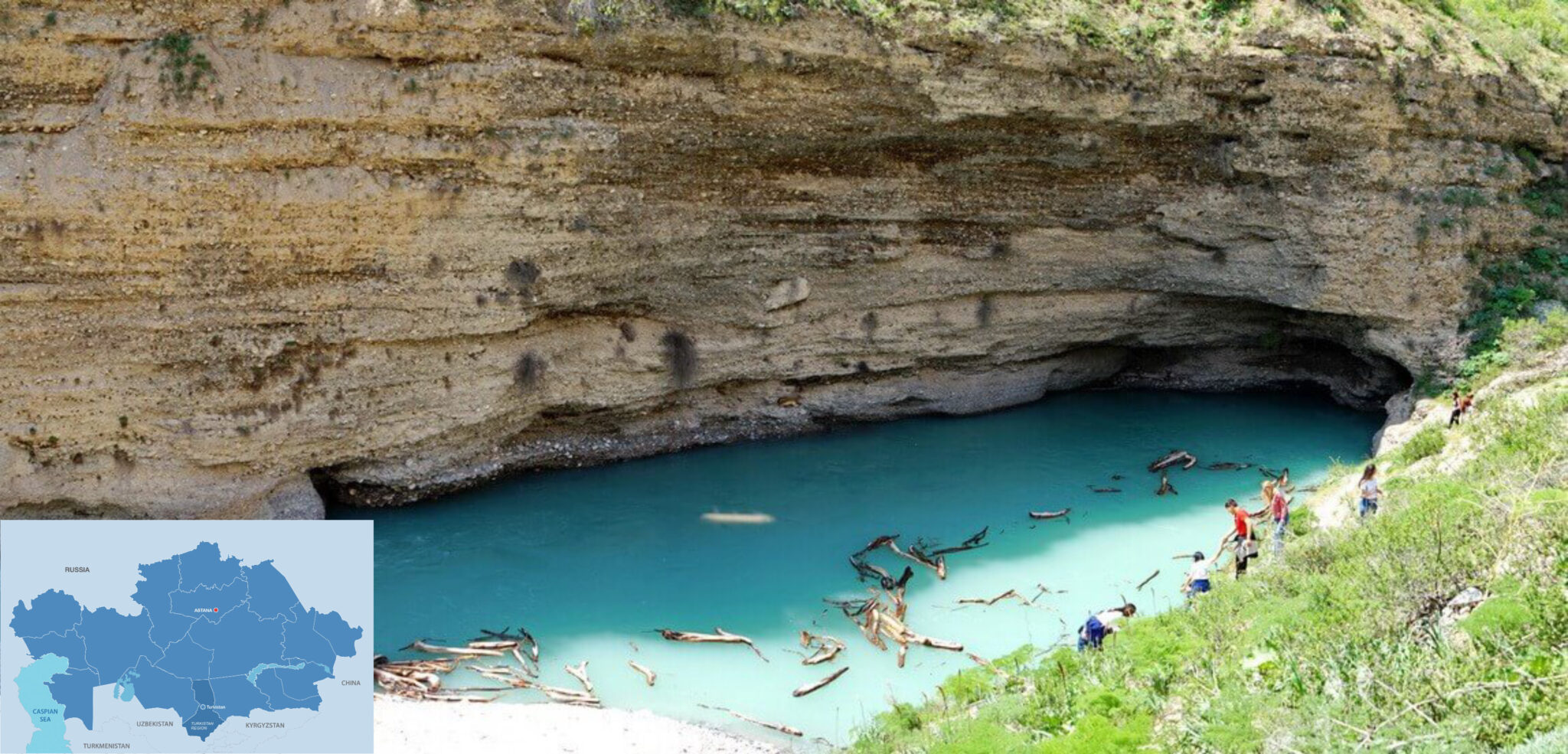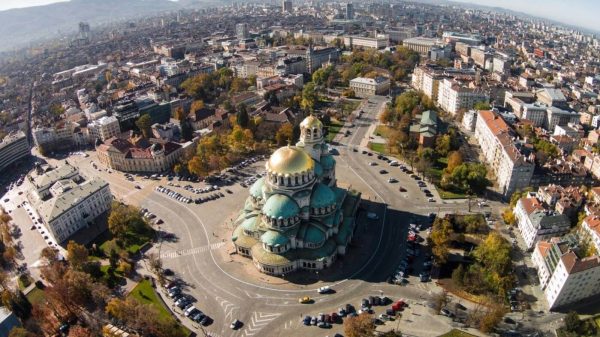The Aksu River Canyon is the deepest canyon in Central Asia and the hallmark of Aksu-Zhabagly, the very first nature reserve of Kazakhstan and the pearl of the Turkistan Region. Tourists who have visited this breathtaking place often compare it to ‘the lost world’ described in Arthur Conan Doyle’s novel. The natural landscapes and visitors’ impressions are detailed in a special report by Kazinform.
The significant attention the canyon of the Aksu River receives from tourists is due to its picturesque views and its convenient proximity to Shymkent, which is only 100 kilometers away. The route to the canyon is not only accessible for experienced tourists but also suitable for beginners, elderly people and children.
White river
After traveling 60 kilometers from Shymkent, groups of tourists make their first stop at the narrowest part of the canyon. Here, the distance from one bank to the other is about half a meter, allowing outdoor enthusiasts to cross from one side to the other with little fear. However, caution is still advised, as there is a drop of at least 30 metres below, where a blue strip of the river can be seen at the bottom.

Aksu River. Photo credit: drive2.ru
The sources of the Aksu River originate from the glaciers of the Talas Alatau. The pure mountain river earned its name (“ak,” meaning white and “su,” meaning water in the Kazakh language) because during the flood season in June-July, its waters, carrying particles of eroded rocks, turn a milky-turquoise color. For the rest of the year, the Aksu remains a light blue.
Around 40 kilometers from the source, at an altitude of around 3,500 meters above sea level, the river bursts into a hilly valley where over many centuries it has carved a deep bed with steep walls. This is the Aksu River canyon.
Dragon’s throat and mixer
The next stop for tourists is at the grotto, where the canyon banks converge, and the river continues its journey through unseen underground galleries. Some call this picturesque spot the Dragon’s Throat. After about 100 meters, tourists find themselves under the arch of the grotto, where the river is deep and fast-moving.
Throughout most of its length, the canyon has steep banks, making it risky to reach the bottom in all but one particular spot. The path leading to it is constantly sloping, and about halfway down, the microclimate changes. As it was a century ago, the well-sunlit rocks and the mountain river provide air humidity, creating a greenhouse-like microclimate in the canyon. Because of this, in addition to the plants found in the rest of the Aksu-Zhabagly reserve, you can observe horsetails, ferns and even relict plants. This unique environment is another reason why tourists compare the Aksu River canyon area to the lost world described in Arthur Conan Doyle’s novel.

Photo credit: Irina Galushko
At one particular location, a large pool has formed, where the water level changes depending on the season. During the intense glacial melting, there is so much water that the current sets numerous logs in motion—logs that were once juniper trees growing along the banks but were washed away by the Aksu’s waters. For months, these logs swirl in a whimsical dance until the river level starts to fall in the autumn and then they are scattered along the banks. Instructors and tourists call this place “The Mixer,” and it is considered the main natural attraction of this part of the canyon.
Nearby, there is a popular photo spot for the tourists – a small but stunning grotto. Especially daring tourists are willing to plunge into the icy water for a good shot, even in the summer. Another group of brave souls fearlessly steps onto a peculiar ledge, popularly known as “The Finger.”


















































